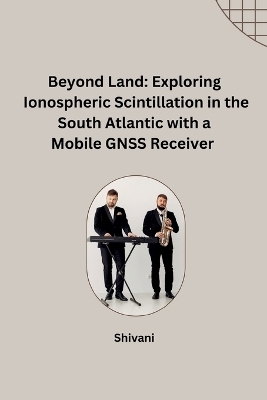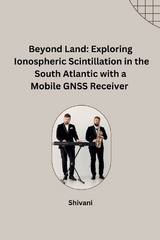Beyond Land: Exploring Ionospheric Scintillation in the South Atlantic with a Mobile GNSS Receiver
Seiten
2024
tredition (Verlag)
978-3-384-24220-4 (ISBN)
tredition (Verlag)
978-3-384-24220-4 (ISBN)
Imagine navigating the vast expanse of the South Atlantic Ocean, where traditional methods like land-based stations can't reach. Here's where a groundbreaking approach emerges: using a mobile GNSS (Global Navigation Satellite System) receiver to explore "ionospheric scintillation" in this remote region.Ionospheric scintillation is a rapid fluctuation in radio signals caused by variations in electron density within the upper atmosphere. The South Atlantic Anomaly (SAA), a region with a weakened magnetic field, intensifies this phenomenon. For navigation systems like GPS, scintillation can lead to errors or even signal loss.Traditionally, studying scintillation relied on land-based receivers, leaving vast ocean areas unexplored. This mobile GNSS receiver mounted on a research vessel ventures into the heart of the SAA, collecting real-time data on scintillation intensity and its effects on GNSS signals.This groundbreaking approach offers several advantages. It allows scientists to map the spatial extent of scintillation within the SAA, creating a more comprehensive picture of this phenomenon. By studying how scintillation intensity varies across the region, scientists can refine prediction models for safer navigation.Furthermore, a mobile receiver can capture the dynamic nature of scintillation. Unlike land-based stations with fixed locations, the mobile receiver offers a continuous stream of data, revealing how scintillation intensity changes over time. This data is crucial for understanding how scintillation events evolve and their potential impact on GNSS users.The information gleaned from such expeditions paves the way for improved navigation in the South Atlantic. By understanding scintillation patterns, mitigation strategies like using multiple frequencies or real-time signal correction techniques can be developed.Ultimately, venturing "beyond land" with a mobile GNSS receiver is a critical step towards ensuring safe and reliable navigation in this challenging region.
Professor Dr. Shivani, a leading authority on sustainable development, brings a wealth of experience to "Together for Tomorrow: Sustainable Development." Her distinguished career spans academia, research, and advocacy. Professor Dr. Shivani has held prestigious academic positions, authored groundbreaking research on sustainable practices, and actively championed sustainability initiatives on a global platform. Her passion for environmental stewardship and her commitment to empowering others are woven into the fabric of this book. Professor Dr. Shivani's expertise ensures "Together for Tomorrow" provides readers with the knowledge, tools, and inspiration to create a more sustainable future, together.
| Erscheint lt. Verlag | 29.5.2024 |
|---|---|
| Verlagsort | madhya |
| Sprache | englisch |
| Maße | 155 x 234 mm |
| Gewicht | 253 g |
| Themenwelt | Mathematik / Informatik ► Informatik ► Betriebssysteme / Server |
| Informatik ► Weitere Themen ► Hardware | |
| Technik | |
| Schlagworte | Equatorial Ionospheric Irregularities • GNSS Receiver Performance • GNSS Signal Disruptions • GPS Signal Degradation • Ionospheric Correction Models • Ionospheric Scintillation • Mobile GNSS Receiver • radio wave propagation • South American Ionospheric Observations • South Atlantic Anomaly • Space-Based Positioning Systems • Space Weather Effects |
| ISBN-10 | 3-384-24220-3 / 3384242203 |
| ISBN-13 | 978-3-384-24220-4 / 9783384242204 |
| Zustand | Neuware |
| Haben Sie eine Frage zum Produkt? |
Mehr entdecken
aus dem Bereich
aus dem Bereich
entwickle, drucke und baue deine DIY-Objekte
Buch | Hardcover (2023)
Hanser, Carl (Verlag)
CHF 48,95




